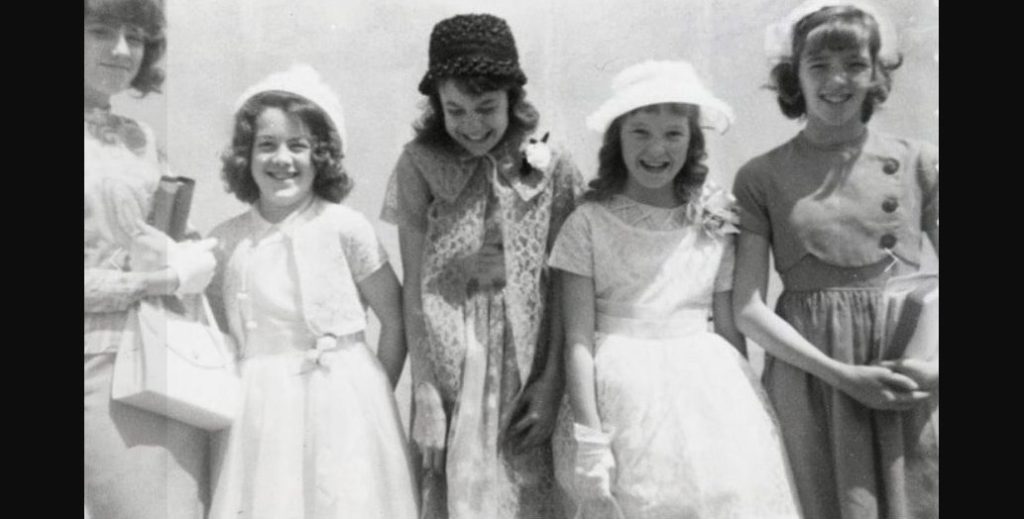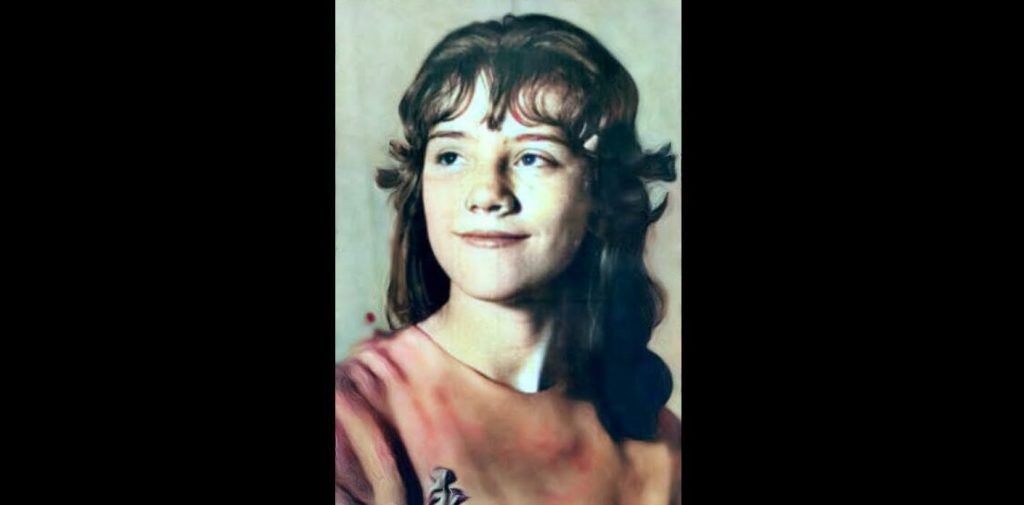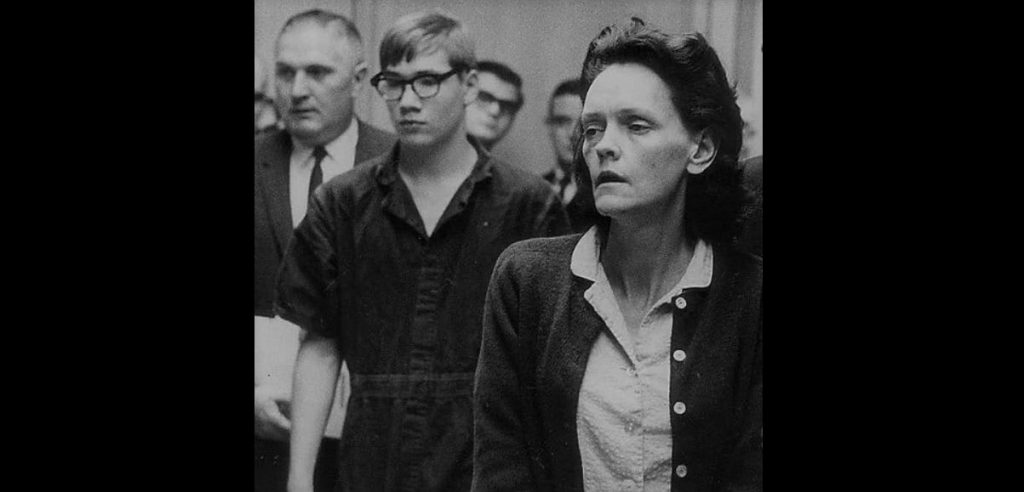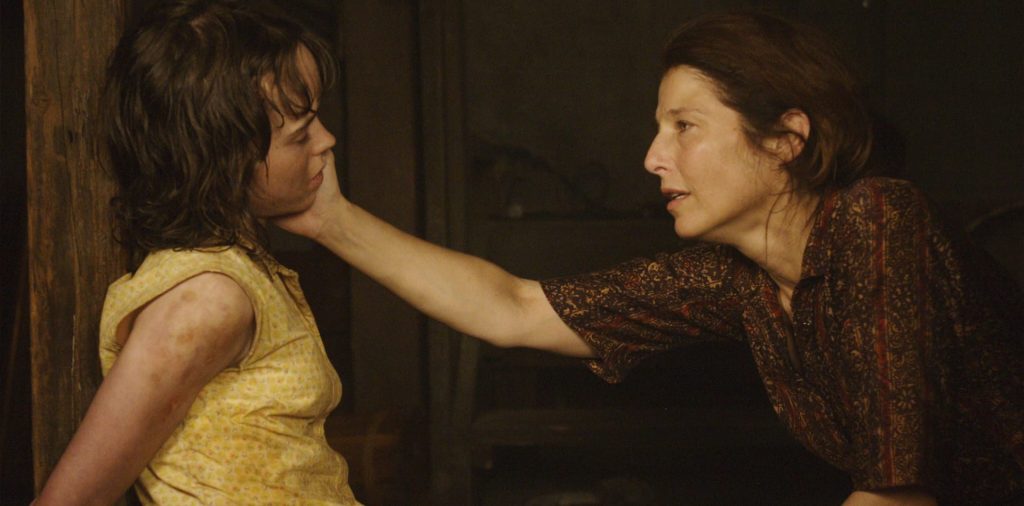Depicting a harrowing tale of torture and abuse, the 2007 crime film, ‘An American Crime,’ tells the story of Sylvia Likens and her sister, Jenny Likens, as they start bunking with a family of seven children headed by Gertrude Baniszewski. Unable to travel with their parents, the two young girls are left to stay at their new household with a struggling caregiver, where the elder sister, Sylvia, is subjected to horrific punishment and abuse in response to her supposed wickedness. Soon, her torment is extended when the neighborhood children join in on the act, humiliating and belittling the girl with no end in sight.
Director Tommy O’Haver presents a disturbing account of how social and moral structures fail a young girl whose childhood innocence is extinguished at the hands of her adult custodian. In the name of meting out punishment and correcting erroneous behavior, Gertrude steps far over the line, destroying any vestige of responsibility and accountability held by those who purport to care for children and guard them against all ills. As it touches upon raw topics brimming with emotion and sympathy for the mistreatment endured by a single vulnerable victim, ‘An American Crime’ forces difficult questions about its harsh reality and prompts inquiry on whether it is based on a true story.
The Real-Life Abuse Case at the Heart of An American Crime
Written by director Tommy O’Haver and his co-writer Irene Turner, ‘An American Crime’ is based on a 1965 true crime event involving the abuse and murder of a 16-year-old girl, Sylvia Marie Likens. Aware of the story, O’Haver wanted to bring Sylvia’s life to the screen by adapting her real tragedy. According to reports, Sylvia and her sister, Jenny Likens, were the children of carnival workers Betty and Lester Likens, who were always traveling. Soon after they reconciled their differences, the Likens decided to resume their carnival lifestyle and met Gertrude Baniszewski, a struggling mother of seven who had just recently been acquainted with them. Lester requested Gertrude to take custody of Sylvia and Jenny, promising her a payment of $20 per week, which the impoverished woman accepted.

In John Dean’s 1966 book, ‘The Indiana Torture Slaying: Sylvia Likens’ Ordeal and Death,’ Sylvia and Jenny’s life with the Baniszewskis is described to have started uneventfully. It states that when Lester’s payment was delayed in the second week, Gertrude began venting her anger at the girls by hitting them. More incidents of beatings followed, often with the use of implements like paddles and steadily increasing in their intensity. Eventually, most of the physical abuse was directed towards Sylvia, who was constantly accused of being a thief, unhygienic, and sexually promiscuous. These became the reasoning grounds for the mental and physical torture inflicted on the young girl, whose life with the Baniszewskis rapidly turned into hell.
The Escalating Torment Endured by a Young Girl
While Sylvia was subjected to mistreatment, she and her sister were forced to keep their mouth shut whenever their parents stopped by the house. Fearful of the consequences, the pair reportedly decided it would only make matters worse if they spoke up. Sylvia, in particular, ran afoul of not only Gertrude but also her oldest daughter, Paula, who also attacked her viciously from time to time. The 16-year-old was accused of spreading rumors about Paula at school, who was pregnant at the time. It has been reported that as a retaliation to the name-calling and torture Sylvia was subjected to for claiming to have a boyfriend at one time, she allegedly spread rumors about Paula and Stephanie in school.

She was reportedly battered and punished owing to the allegations. Gertrude even lured the neighborhood kids with false rumors about Sylvia to come and exact their revenge against her through physical beatings, cigarette burn marks, lacerations, and all manner of humiliating acts. On one occasion, she was reportedly treated as a practice dummy for judo sessions held by some of the kids, often thrashing her against the floor or the walls. The mounting injuries left Sylvia progressively weak and anxious, which resulted in her losing control over her bladder functions.
The Tragic Resolution of the Abuse Case
In October 1965, unable to stop herself from wetting the bed, Gertrude moved Sylvia to the basement. Provisions were made to bathe her in a bathtub with scalding hot water where salt was rubbed into her wounds by Paula. She was starved, dehydrated, burned, beaten, and was made a sport out of by Gertrude and the kids. Reportedly, she was even fed fecal matter and urine from the diaper of Gertrude’s 1-year-old son. Things soured further one morning when Gertrude told Sylvia, “You have branded my daughters; now I am going to brand you,” and then proceeded to tattoo the words “I’m a prostitute and proud of it” on her abdomen.

While she did not complete it, a 14-year-old kid from the neighborhood, Richard Hobbs, finished it and then moved her to the basement. There, he and 10-year-old Shirley Baniszewski attempted to add the letter “S” to their branding but only ended up making it appear as the number “3.“ As a consequence of the torture, Sylvia told her sister Jenny one night: “Jenny, I know you don’t want me to die, but I’m going to die. I can tell it.“ Soon after, she launched a few escape attempts, which failed due to her weakness and the severe physical toll that had been subjected to her body. On October 26, 1965, Sylvia succumbed to her injuries, following which her sister Jenny testified to the police, leading to the apprehension of Gertrude, Paula, and a contingent of others who had a hand in her death.
During the trial, Gertrude Baniszewski, Paula Baniszewski, John Baniszewski, Richard Hobbs, and Coy Hubbard were tried together on April 18, 1966. Reportedly, conflicting testimonies emerged when Gertrude accused the kids of primarily harming Sylvia, putting specific blame on her daughter, Paula, and Stephanie’s boyfriend, Coy. On the other hand, the defense for the minors allegedly attributed the blame to Gertrude’s feet for leading the pack in Sylvia’s torment. Ultimately, Gertrude was charged with first-degree murder, her daughter Paula with second-degree murder, while Richard, Coy, and John were charged with manslaughter.
An American Crime Depicts the Pain Suffered By the Protagonist
Although ‘An American Crime’ delves into the heart of the ugly darkness that extinguished the life of Sylvia Likens, filmmaker Tommy O’Haver wanted to keep the narrative constrained in order to maintain a level-headed approach. He was worried about sensationalizing the real-life events that became the basis of the movie. In a 2007 interview with The New York Times, the director said, “It would have been easy to take this story over the top. So I purposely pulled back. My mantra was ‘restraint, restraint, restraint.‘” O’Haver also stated that his work was an interpretation of the real incident. “We came to Indianapolis and got the entire court transcripts. We started pulling things out and eventually filled three notebooks,“ he said.

“We had all these facts. Then we asked ourselves, ‘Why?‘ and ‘What kind of people would do this?‘” he added. Thus, the film analyzes the root of the motivations and the chaos that pervaded the life of an innocent sixteen-year-old who was picked on, harassed, bullied, belittled, humiliated, and left with no sense of security for herself in a place that should have been her home. As it digs into the reality of what Sylvia Likens went through, albeit through a careful lens that hides some of the immense brutality she suffered in real life, it also incites a thought-provoking discussion about the responsibility of society toward protecting the lives of children who can’t protect themselves. The tragedy of her murder brings a stark and bleak perspective to the film’s narration and Sylvia’s plight.
Read More: Best Abduction Movies on Hulu


You must be logged in to post a comment.